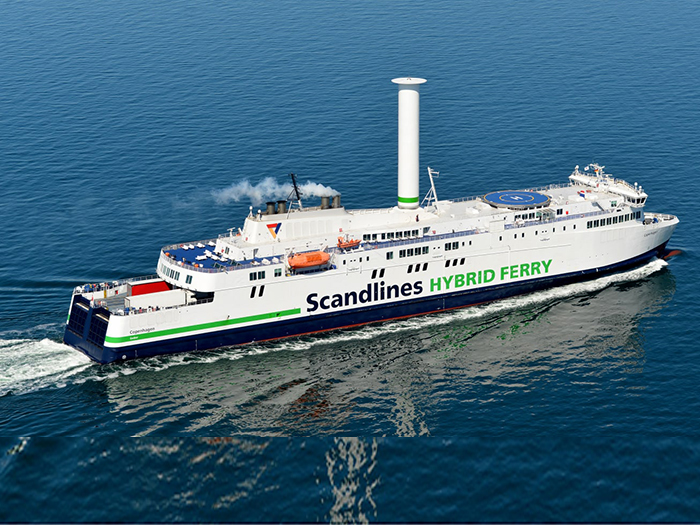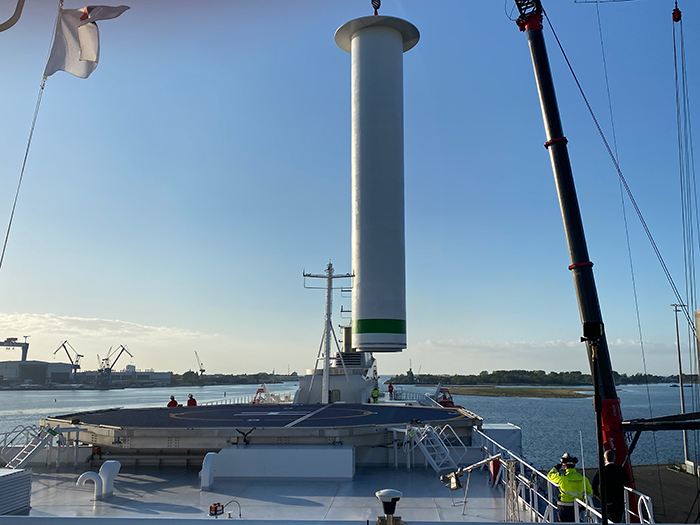
Scandlines builds up rotor sail operating experience
Written by Nick Blenkey
M/V Copenhagen has been sailing with rotor sail installed since May [Photo: Scandlines/Michael Lemvig Olsen]
Since the end of May the Scandlines hybrid ferry M/V Copenhagen has been operating on the Rostock-Gedser route between Germany and Denmark with its propulsion assisted by a 30 meter tall Norsepower rotor sail.
Remarkably, installation of the 42-ton rotor sail was accomplished during an overnight stay in the port of Rostock, though the necessary 21-ton steel foundation (21 tons) was put in place during an ordinary shipyard stay in November 2019.The necessary steel foundation (21 tons) for the Rotor Sail (42 tons) was put in place during an ordinary yard stay back in November 2019.
“We were able to complete almost everything within the limited time of just a few hours,” says the senior captain of the MV Copenhagen, Alan Bach. “This was key as we are operating on a 24/7 basis, every loss of service or revenue is naturally critical for ferry operations.”
The installation was undertaken as part of the EU funded Wind Assisted Ship Propulsion (WASP) project that aims to install five wind assisted propulsion units on to a series of different vessels operating in the North Sea and Baltic Sea to test, validate and help facilitate the uptake off wind-assisted propulsion technologies.
These systems are expected to deliver between 4 – 5% fuel savings, corresponding to the same amount of CO2, on average, and more than 20% in optimal wind conditions.
An important part of the WASP project is the monitoring and validation of the equipment and performance itself.
“We’re expecting 4-5% reduction in CO2 emissions which is not an insignificant amount and if everything goes well, we are considering further installations in the future,” says Scandlines COO Michael Guldmann Petersen. “We are very happy that the system is fully automated and we’re expecting little in the way of technical problems, the last month of operations has been quite smooth and we see that continuing throughout the test period.”
“Scandlines has a strong track record of investing in new clean technologies to reduce emissions across its fleet,” says Norsepower CEO Tuomas Riski. “The ability to harness the wind through Norsepower’s rotor sail – alongside hydrodynamic hull optimization, and hybrid electric propulsion system with a battery powered energy storage – makes the M/V Copenhagen one of the world’s most energy-efficient ferries.”





